


|
There's a 1916 Lawson piece in issue #2. |
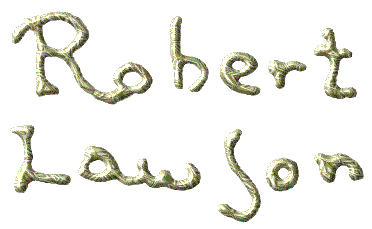 |
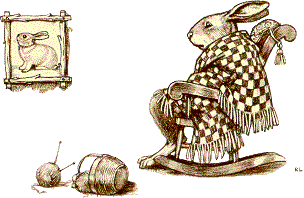 |
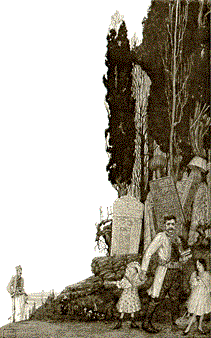 Robert
Lawson was born in 1892. Others in his immediate generation are
McClelland Barclay, Pruett Carter, Dean Cornwell, Percy
Crosby, Dorothy Lathrop,
Andrew Loomis, George Petty, Gardner Rea, Norman Rockwell
and Raeburn van Buren. He grew up in Montclair, New Jersey and
was, by all accounts, a normal child with no signs of an artistic
temperament. His interest in art was sparked in high school and
he went to the New York School of Fine and Applied Arts
after graduation.
Robert
Lawson was born in 1892. Others in his immediate generation are
McClelland Barclay, Pruett Carter, Dean Cornwell, Percy
Crosby, Dorothy Lathrop,
Andrew Loomis, George Petty, Gardner Rea, Norman Rockwell
and Raeburn van Buren. He grew up in Montclair, New Jersey and
was, by all accounts, a normal child with no signs of an artistic
temperament. His interest in art was sparked in high school and
he went to the New York School of Fine and Applied Arts
after graduation.
His earliest work is reported to be in 1914 when he had his
first studio in Greenwich Village and "did magazine illustration,
stage settings, and some commercial work."![]() I've never seen anything from this very early era. After a stint
in WWI in a camouflage unit, he finally shows up on my radar with
some illustrations in The Century Magazine of September
1919. The work appears to be derivative more of Sidney
Sime than anyone else. See sample at right.
I've never seen anything from this very early era. After a stint
in WWI in a camouflage unit, he finally shows up on my radar with
some illustrations in The Century Magazine of September
1919. The work appears to be derivative more of Sidney
Sime than anyone else. See sample at right.
He quickly settled on pen & ink as his medium of choice and by 1921 he was producing complex images for Century like the one below - and that's reproduced at twice actual size, too. In 1922 he produced illustrations for his first book, Little Prince Too Fat.
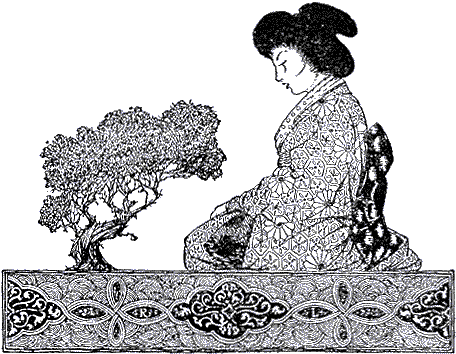
Magazines like The Century phased out the use of illustrations
and became more "literary" magazines about this time.
My library of these titles simply stops after 1921. Illustrations
became the sole purview of larger-format titles like The Saturday
Evening Post, The Ladies Home Journal and Colliers.
And I don't seem to have any records of Lawson working between
1922 and 1930. He is supposed to have done "commercial work
and magazine illustrations"![]() during
that time. I'd love to hear from anyone with additional data.
during
that time. I'd love to hear from anyone with additional data.
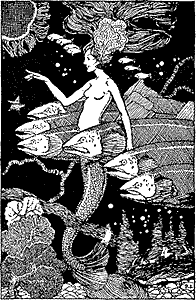 It's
in 1930 when I pick up his trail again. He began to illustrate
books and that certainly got my attention. These
early efforts included The Wee Men From Ballywooden, From
the Horn of the Moon and The Roving Lobster (1931 -
see right) - all by Arthur Mason. The style is reminiscent of
John R. Neill and Dorothy
Lathrop. Though he would occasionally stray from the medium,
most of his career was devoted to mastering pen & ink. The
line would occasionally thicken, as in Monro Leaf's The Story
of Ferdinand (1936) or become softened with wash, as in
Rabbit Hill (1944 - rocking rabbit at top of page) or thin
down to a line so consistent and fine that it's a marvel to behold,
as in McWhinney's Jaunt (1951 - fishing cyclist below).
It's
in 1930 when I pick up his trail again. He began to illustrate
books and that certainly got my attention. These
early efforts included The Wee Men From Ballywooden, From
the Horn of the Moon and The Roving Lobster (1931 -
see right) - all by Arthur Mason. The style is reminiscent of
John R. Neill and Dorothy
Lathrop. Though he would occasionally stray from the medium,
most of his career was devoted to mastering pen & ink. The
line would occasionally thicken, as in Monro Leaf's The Story
of Ferdinand (1936) or become softened with wash, as in
Rabbit Hill (1944 - rocking rabbit at top of page) or thin
down to a line so consistent and fine that it's a marvel to behold,
as in McWhinney's Jaunt (1951 - fishing cyclist below).
I have to make a personal aside here. McWhinney's Jaunt was one of, if not the first illustrated book that I ever became aware of. I was five years old when it was published and my dad bought me a copy to occupy myself as he drove us from Pontiac, Michigan to Pittsburgh, Pennsylvania. I had quite forgotten the fanciful images of McWhinney, who had invented a gas that he put in his bicycle tires so he could actually fly. I say forgotten because I had never come across a copy in my book-collecting/selling career and I wasn't sophisticated enough to connect that childhood memory with an actual artist.
Then about ten years ago, my older brother presented me with a wrapped box that he said belonged to me. Puzzled, I opened the box to rediscover McWhinney's Jaunt. The book had somehow traveled with him through his life instead of with me through mine. I was ecstatic. Of course it was a first edition! But just as surely, some little kid had written his name on the endpaper (which was torn and creased). The front hinge was starting, the cloth was dampstained with the spine ends frayed and the tips bumped and worn through. Pages were torn and creased and smudged and, well you get the idea. And for once it wasn't some nameless 'someone' - it was me! Here's the evidence. I can only plead ignorance. And I did learn to do better.

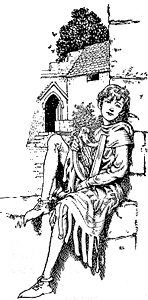 The
path from The Roving Lobster to McWhinney's Jaunt and
beyond was prodigious. E. Lee Baumgarten has over 50 entries for
Lawson in his Price Guide and Bibliographic Checklist.
Lawson began writing many of his own stories in 1939 and started
with the famous Ben and Me - a story of a mouse and his
Ben Franklin. His Rabbit Hill won the Newbery Medal in
1944 (as did the book Adam of the Road [at right] which
he illustrated for Elizabeth Janet Gray). His biography of his
ancestors, They Were Strong and Good, won the Caldecott
Medal for 1940. His acceptance speech is a classic call for adults
to respect children and not to predigest their reading material.
I don't think too many people were listening.
The
path from The Roving Lobster to McWhinney's Jaunt and
beyond was prodigious. E. Lee Baumgarten has over 50 entries for
Lawson in his Price Guide and Bibliographic Checklist.
Lawson began writing many of his own stories in 1939 and started
with the famous Ben and Me - a story of a mouse and his
Ben Franklin. His Rabbit Hill won the Newbery Medal in
1944 (as did the book Adam of the Road [at right] which
he illustrated for Elizabeth Janet Gray). His biography of his
ancestors, They Were Strong and Good, won the Caldecott
Medal for 1940. His acceptance speech is a classic call for adults
to respect children and not to predigest their reading material.
I don't think too many people were listening.
Other famous books that he illustrated were Sword in the Stone by T.H. White (1939), Poo Poo and the Dragons by C.S. Forester (1942), and his own Capt. Kid's Cat and Mr. Revere and I. Many of his books are still in print. On February 25, 2000, Mr. Revere & I, Ben & Me, Rabbit Hill, Adam of the Road, They Were Strong & Good, and others were all available in modern editions from my local bookstore. As you might expect, I have a soft spot in my heart for Lawson books.
| From 1930 to 1933, Lawson took up etching. At right is one of the several that were printed in The Golden Book magazine for July 1931 to accompany an Arthur Mason story, Pigs in the Castle. |
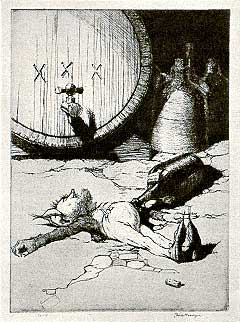
|
| I've seen very few color paintings by Lawson. Most of the work he did in color is pen & ink with flat color added. It's interesting, but I don't consider it to be his best work. On the other hand, look at this image from Greylock and the Robins from 1946. It's an actual painting and it makes me wish he'd tried a few more in this medium. |
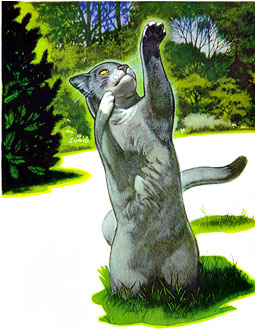
|
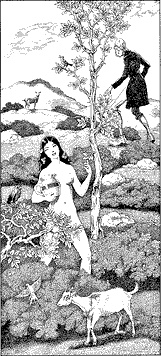
|
And then there is the very scarce Lawson nude. This image appeared in The Limited Editions Club The Crock of Gold by James Stephens from 1942. It's a very special book with illustrations on nearly every one of the 163 pages, plus it's signed by Lawson from an edition of 1500. |
Lawson's quote from the November, 1940 Horn Book is repeated by Mahoney, Latimer and Folmsbee and I feel compelled to reprint it here. I'm currently tangentially involved in the raising of Karen's twin nephews and I strongly echo his approach.
"I have never, as far as I can remember, given one moment's thought as to whether any drawing that I was doing was for adults or children. I have never changed one conception or line or detail to suit the supposed age of the reader. And I have never, in what writing I have done, changed one word or phrase of text because I felt it might be over the heads of children. I have never, I hope, insulted the intelligence of any child. And with God and my publishers willing, I promise them that I never will."
And with writing that, I, for the first time, gave consideration to the age of the readers of these pages. And I find that I'm happy with the results of my efforts for all age groups. I hope you are, too.
Robert Lawson died in 1957. His last complete book was The Big Wheel. And I find it criminal that the bastions of our illustrative heritage did not see fit to include him in either 200 Years of American Illustration or The Illustrator in America from 1880 to 1980.
 To learn more about Robert Lawson, see:
To learn more about Robert Lawson, see:|
|
Mahoney, Latimer and Folmsbee, 1947 The Horn Book |
| Price Guide and Bibliographic Check List for Children's Illustrated Books 1880-1960 | E. Lee Baumgarten, 1996 Baumgarten |
| The Vadeboncoeur Collection of Knowledge | Jim Vadeboncoeur, Jr. 1999 |
| The Vadeboncoeur Collection of ImageS B&W 2 | Jim Vadeboncoeur, Jr. 2004 JVJ Publishing |
|
Illustrations are copyright by their respective owners. This page written, designed & © 1999 by Jim Vadeboncoeur, Jr. Updated 2011. |
